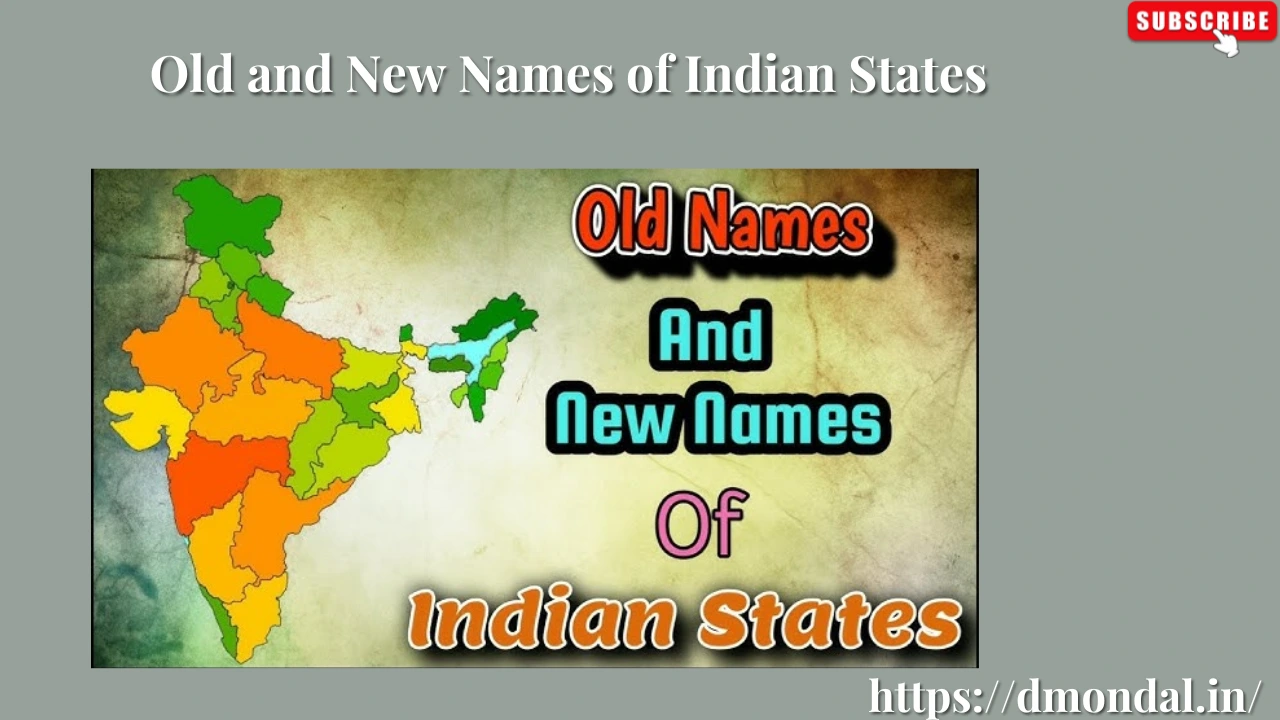Old and New Names of Indian States
India is a land of rich culture, languages, and traditions. Over the years, many states and cities in India have undergone name changes to reflect their linguistic identity, cultural heritage, and historical pride. These renamings are not just cosmetic changes but also represent the sentiments of people living in those regions. For example, Madras became Tamil Nadu to honor Tamil culture, and Orissa officially changed to Odisha to align with the Odia language.
In this article, we will explore the complete list of old and new names of Indian states, the reasons behind these changes, and some interesting facts related to state renaming in India.
Why Do Indian States Change Their Names?
The renaming of states in India usually happens for cultural, political, or linguistic reasons. Some of the most common reasons include:
- Linguistic Identity – To match the state’s official language (Orissa → Odisha).
- Cultural Significance – To highlight heritage and history (Mysore → Karnataka).
- Political Demands – To respect local sentiments and regional pride (Uttaranchal → Uttarakhand).
- Colonial Influence – Many names given during British rule were anglicized, and states later reverted to their original names.
List of Old and New Names of Indian States
Here is a detailed table of states that have undergone official name changes in India:
| Old Name | New Name | Year of Change | Reason/Significance |
|---|---|---|---|
| Madras | Tamil Nadu | 1969 | To reflect Tamil culture and language |
| Mysore | Karnataka | 1973 | Representing Kannada-speaking regions |
| Orissa | Odisha | 2011 | Based on Odia language pronunciation |
| Uttaranchal | Uttarakhand | 2007 | “Land of Gods” (Devbhoomi) in Sanskrit |
| Travancore-Cochin | Kerala | 1956 | Derived from “Keralaputra” in ancient texts |
| North-East Frontier Agency (NEFA) | Arunachal Pradesh | 1972 | “Land of the Rising Sun” |
| Laccadive, Minicoy, Amindivi Islands | Lakshadweep | 1973 | Sanskrit word meaning “a hundred thousand islands” |
History of State Renaming in India
The States Reorganisation Act of 1956 was a turning point in Indian history. It reorganized states mainly on linguistic lines, which also influenced several renamings. For instance, Travancore-Cochin was merged and renamed Kerala in 1956. Later, in the 1960s and 70s, more states followed suit to embrace their cultural and linguistic roots.
In recent years, Orissa’s renaming to Odisha in 2011 was a landmark decision, as it also officially changed the name of the Odia language in the Constitution of India. Similarly, Uttaranchal’s change to Uttarakhand in 2007 was seen as an effort to connect the state’s identity with its spiritual heritage.
Difference Between State and City Renaming
While many Indian cities like Bombay → Mumbai, Calcutta → Kolkata, and Bangalore → Bengaluru have also been renamed, the renaming of states carries a larger significance because it impacts administration, government identity, and the cultural representation of millions of people.
Key Facts About State Name Changes in India
- All official state name changes must be approved by the Parliament of India.
- State names often draw inspiration from local languages and ancient texts.
- Many state names highlight India’s diverse cultural and linguistic heritage.
- Name changes are not just symbolic; they are a matter of identity and pride.
Read More: Click here
